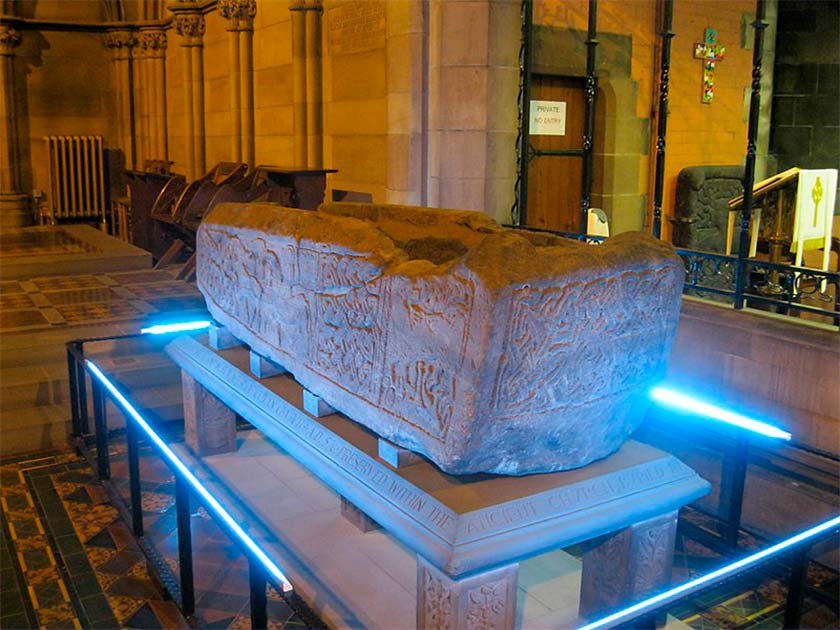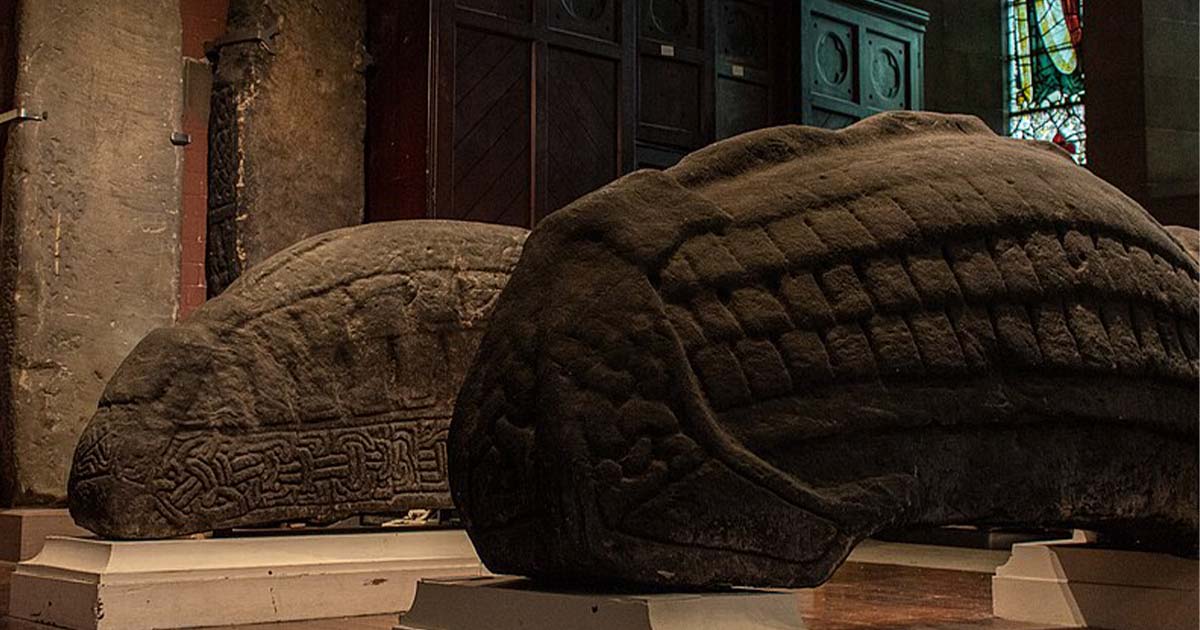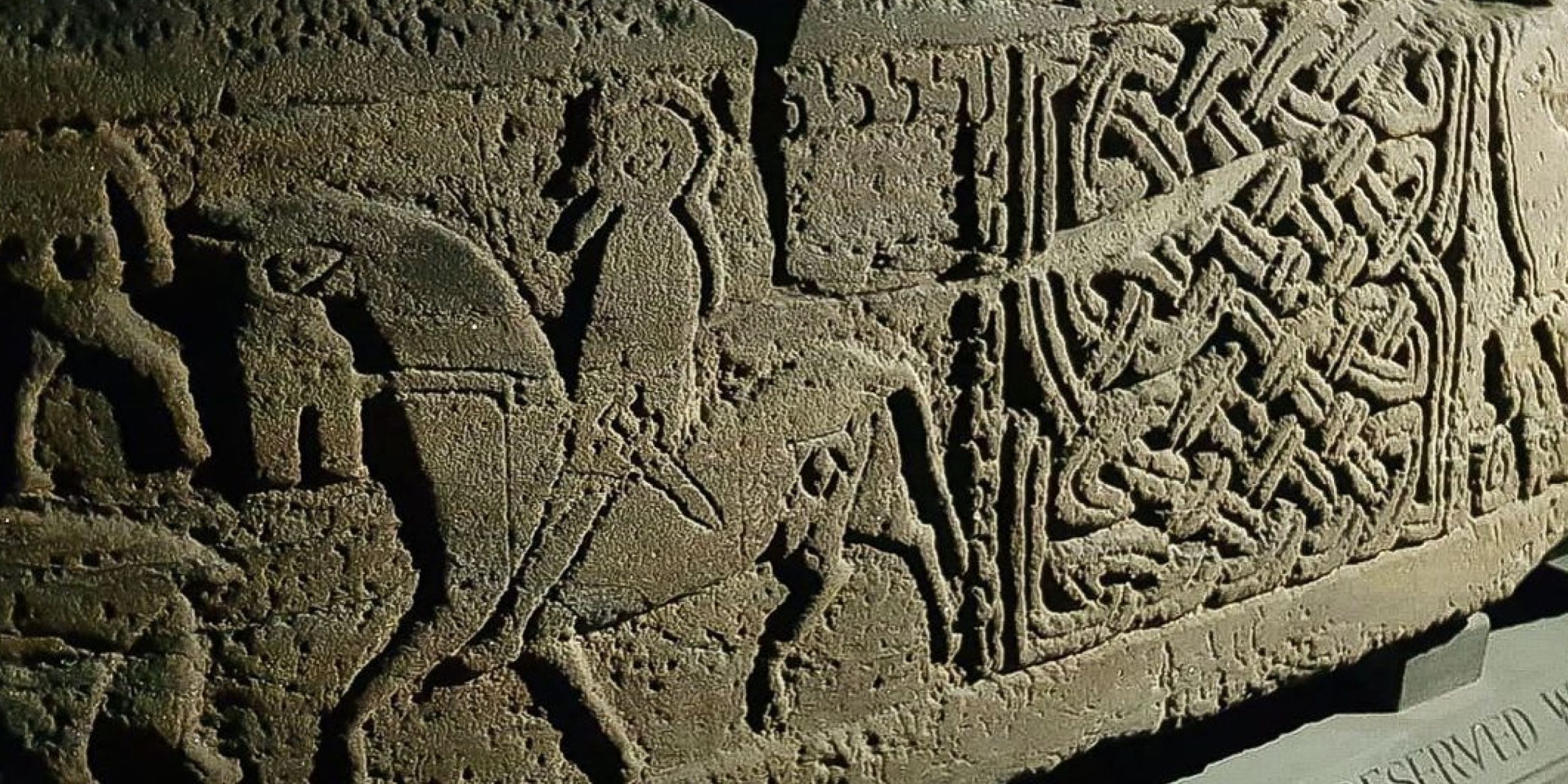The Govan Stones
An extract from my walk/photo journal about my visit to The Govan Stones:

Today, Govan Old Church, dedicated to St. Constantine, sits in an unprepossessing landscape, sitting at the end of a quiet cul-de-sac off the Govan Road, behind a medley of Victorian buildings, blocks of flats, and a modern shopping centre, in an up-and-coming area of urban regeneration. But behind the plain, stark west door, you will find something unexpected and amazing, and looking back into the history books you will find a remarkable story.
The meaning of the word ‘Govan’ means ‘little hill’, and the origins of Govan are believed to pre-date those of Glasgow. Govan has some internationally important archaeological sites, such as “Doomster Hill” – a (now destroyed) man-made mound some 45m in diameter on the south side of the River Clyde which dominated the Govan landscape – a ceremonial hill with a sacred well. Tradition has it that by the 6th St. Constantine had arrived, built a small wooden church next to this mound, and went on to found a monastery. With its’ strategic placement, at a crossing point of the River Clyde and at the mouth of the River Kelvin, travellers and pilgrims needed to pass through Govan, which rapidly became an important ecclesiastic community.

By the 7th century, the area was ruled by one of the most powerful kings of the British Isles, who had as his power-base Dumbarton Rock, some 17km away. By the 9th century, the Vikings had appeared in the region, a new king had taken up residence in Govan itself, and the kingdom of Strathclyde was born. Govan was an important and significant centre of power, both religious and secular, and also the burial place of kings.
In the 12th century, Strathclyde was absorbed into the kingdom of Scotland and the ecclesiastical centre passed to Glasgow Cathedral. From this time on, the importance of Govan as a religious centre declined. A trading community grew up in its place, and as the River Clyde was deepened, it became an important centre for industry and shipbuilding.
A number of new churches, on the same site as the old, followed, the medieval church being replaced in 1726 – an important time for our stones, as the ‘old fashioned’ carved cross slabs were replaced with more diverse burial monuments with different symbolism. Construction on the present building began in 1884, and the church opened in 1888.

Today the building stands tall and imposing, and perhaps a little daunting to visitors new to the area. But, open the west door into the church to find a surprise awaits –three early Christian crosses to your left, mounted in almost semi-darkness and lit to highlight their intricate carvings; welcoming volunteers and a display of literature to your right.
As your eyes adjust to the light within the church, you become aware of the glorious stained glass which acts as a backdrop to the whole. As you gradually take in the contrast of the interior of the church to its outside, you become aware of the stones and other monuments displayed around the walls of the nave, in the north transept, the Baptistry and the chancel.
Of the forty-four carved stones found in the churchyard, mainly in the 19th century, thirty-one survive today. Thirty, dating from the 9th to 11th century, can be seen inside the church (one is still outside the west door of the church). These stones are described as “commemorating the power of those who ruled the Kingdom of Strathclyde’ and this collection as ‘one of Glasgow’s most important historical and cultural assets’.

The showcase of the collection is Govan Sarcophagus, which was carved from a single block of stone in the mid to late 800s. It is unsure if it held the relics of a saint or the bones of a king, but with its interlace designs, figurative panels, a carving of a mounted hunter and other symbolic motifs, it is “undoubtedly one of the most outstanding pieces of sculpture of its age.”
Related Post
A shocking documentary proves that mermaids do exist
SHOCKING Revelation: Thuya, Mother of Queen Tiye, Was the Grandmother of Akhenaten and Tutankhamun—What Ancient Egyptian Secrets Did She Leave Behind?
Breaking News: Astonishing Discoveries at Karahan Tepe Confirm an Extraterrestrial Civilization is Hiding on Earth, and NO ONE Knows!
Breaking News: Researchers FINALLY Discover U.S. Navy Flight 19 After 75 Years Lost in the Bermuda Triangle!
NASA’s Secret Investigation: Uncovering the Astonishing Mystery of the UFO Crash on the Mountain!
Explosive UFO Docs LEAKED: Startling Proof That Aliens Ruled Ancient Egypt!